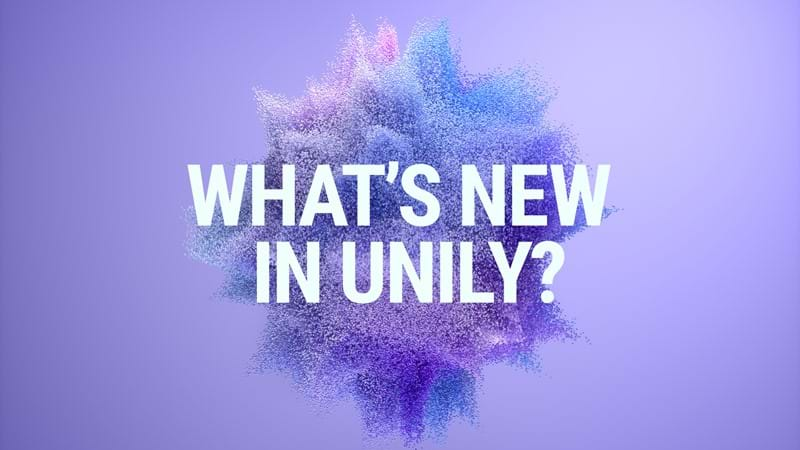How to create marketing-grade internal comms campaigns
Are you noticing employee engagement levels slipping? Is communications fatigue sweeping through your workforce and do you feel like your critical messages are landing on deaf ears? It’s time to level up your strategy with marketing-grade campaigns that take internal communications further, faster.

Why internal communicators need to embrace campaign-mindsets
Volume of enterprise communications is at an all-time high. Employees’ expectations are changing – they want internal communications experiences that live up to the ones they get as consumers. The number of communications channels you manage and monitor has multiplied. In short, engaging employees is getting harder and a change of approach is needed.
"The only way to have lasting success is to keep up with changes and master the channels that matter."
Increasingly, internal communicators need to think like marketers to engage their audiences. This means using data to gain comprehensive insights into employee behavior and preferences, mastering multi-channel strategy, and adopting hyper-personalized approaches that mirror those marketers use to engage customers.
Employees tell us that they want experiences at work that live up to the ones they have in their personal lives. They’re used to interacting with brand communications that make every effort to capture their attention, understand their preferences, and cater to their needs.
What is campaign-thinking?
Campaign-thinking is the language of external marketers. Marketers know that making an impression on customers means getting impressions – the more you repeat a message and the more touchpoints you use, the more likely consumers are to remember what you’ve said and take action.
The same is true of employees and internal communications. Posting a single message on your intranet or sending a single email doesn’t inspire action. To truly engage employees, internal communicators need to create campaigns that build engagement over time and meet users where they are on whatever device or channel they prefer.
HubSpot defines campaign marketing as:
"Marketing campaigns are organized, strategized efforts to promote a specific company goal, such as raising awareness of a new product or capturing customer feedback. They typically aim to reach consumers in a variety of ways and involve a combination of media, including but not limited to email, print advertising, television, or radio advertising, pay-per-click, and social media."
Internal communicators can use campaign-thinking to deliver enterprise communications experiences that win the attention of employees and compete with all the other parties vying for their headspace.
Marketers know they're competing for buyers’ attention, and they’ve invested billions in working out how to do it well. With so many new channels to reach employees on, internal communicators now have the opportunity to adopt the same practices to bring employee comms into the now.
It’s time to close the gap between internal and external communications and deliver experiences that build your brand from the inside out.
The hallmarks of a marketing-grade campaign
The success of a campaign depends on many factors, but there are some fundamental elements that underpin the archetypal campaign.
- Goal-driven
- Personalized
- Multi-channel
Goal-driven
At the heart of any good marketing campaign is a defined, measurable goal. The goal of the campaign dictates how much budget and resource is allocated to it. Goals can be broad but should be specific; for example increasing engagement with company townhalls, driving event sign-ups, or getting employees to complete a feedback form. Having a clearly defined goal with an established performance indicator means that campaigns can be clearly targeted and success can be measured.
Personalized
What makes marketers so successful is their access to data. Reams of customer data are collected to deliver personalized experiences to consumers that build lasting relationships. Personalization comes in many forms, but ultimately, it’s about having a clear understanding of who your audience is, what their challenges are, how they prefer to interact with content, and how you can segment them to ensure you’re delivering messages that resonate, at the right time.
Multi-channel
Marketers understand that the competition for consumer attention is fraught. As a result, they create campaigns that meet users where they are: on TV, radio, social media, phones, laptops, in cinemas, gyms, and shopping centers, and just about anywhere where it’s possible to make an impression. Marketers also know that their potential consumers are juggling multiple priorities and thoughts, and to get through to them they need simple and consistent messaging that reinforces the same principles repeatedly until the message lands.
While you might not want your internal communications plastered over TV advertising and radio jingles, the concept still stands. Enterprises can reach employees through an array of channels – internal social feeds, team collaboration platforms, intranet homepages, mobile push notifications, email, digital signage boards; the list goes on. The key to unlocking the value of a campaign mindset is finding ways to unite these channels and leveraging their collective power to deliver consistent, persistent messaging that meets employees where they are.
Create the ultimate internal communications campaign in 3 steps
With all this theory in mind, how can you start to apply campaign thinking to your own internal communications strategy? Here are three simple steps to follow to get you started.
#1. Set your goals
Having clear goals is step one for delivering the ultimate internal communications campaign. Your goal could be increasing engagement with leadership communications, driving sign-ups to an upcoming event, getting employees to complete a survey, or raising awareness about a new charity initiative. The key is to set the purpose for your campaign from the outset, and outline the KPI’s for what success will look like (page views, form completions, etc).
#2. Plan your timeline
Rome wasn’t built in a day, and relationships aren’t built overnight. To truly engage your audience, you need to steadily build engagement over time with content that moves employees from awareness to action. In the marketing world, the funnel approach dominates. The funnel goes like this: awareness > consideration > decision. Marketers create specific content to first raise awareness, then support consideration with further detail, and finally push consumers to make a decision. Internal communications campaigns can follow the same formula.
For example, let’s say your campaign goal is to increase engagement with an employee experience survey, your timeline might look like this:
Pre-launch activities
- Post an article from your HR department letting employees know when the survey is coming and why it’s important that they fill it out
- Schedule an email and mobile notifications to go to employees that haven’t engaged with the article prompting them to engage
- Post a video from your leadership reinforcing the importance of engaging with the survey
Launch activities
- Launch the survey
- Post a featured article to appear on your intranet homepage throughout launch week
- Schedule email and mobile push notifications to send to employees announcing the survey launch and linking to your original article explaining the purpose of the survey
- Post alerts to social and collaboration channels like Slack and Teams alerting employees that the survey is open for submissions
Promotion activities
- Schedule reminder emails, notifications, and alerts that send only to employees that haven’t completed the survey yet
- Post alerts to social and collaboration channels reminding employees they have a few days left to submit their responses
- Schedule an update article thanking employees for their contributions and reminding those that haven’t of the deadline
#3. Measure your results
No campaign is complete without measurement. Analyzing the performance of a campaign is absolutely key to continual success. It enables you to build a better picture of your audience’s preferences so you can understand how to optimize your strategy for next time. You’ll want to consider things like:
- What channels performed best?
- Which audience segments responded best to which types of prompts?
- Did users engage more from their mobile devices or desktop?
- What times and days did you get the most or least engagement?
Work smart with Engagement Automation
Switching to a campaign-driven internal communications approach might be necessary, but it sounds like a lot of work. What makes life easier for marketers is access to hundreds of specialized systems that automate much of the campaign-building process. 76% of companies are using marketing automation software to optimize customer engagement, and 65% reported that their automation strategy is ‘extremely effective’ or ‘very effective’. The good news is internal communicators can now take advantage of the same technology to engage employees.
What is Engagement Automation for internal communicators?
Campaigns Automation brings marketing-grade campaign-building and automation technology to the workplace. For the first time, internal communicators can create complex, multi-channel campaigns that feed off user-data to deliver personalized messages to every employee.
When you have thousands of employees operating in a complex workforce ecosystem, automation technology allows you to meet the expectations of employees and deliver the tight personalization they desire.
Unily’s Engagement Automation capability provides a complete framework for end-to-end campaign building and analysis. By integrating all your channels within the platform you’re able to deliver campaigns across every channel from one place, so everyone gets the same message, no matter where they work, or what channels they interact with.
Engagement Automation saves internal communicators:
- Time
- Money
- Stress
Time: Plotting complex campaigns across multiple channels, personalized to different audience segments, and using multiple media formats is time-consuming, if not impossible without the right technology. Engagement automation provides the framework to simplify this, letting your teams work faster and smarter.
Money: Disengaged employees cost enterprises 34% of every disengaged employee’s salary and companies with a highly engaged workforce are 21% more profitable according to Gallup. Effective communications are the cornerstone of an engaged workforce and anything you can do to increase engagement should be made a priority. Increased productivity, reduced absenteeism, lower turnover, more innovation: none of this is possible when employees aren’t engaged and aligned with the company vision.
Stress: Stress is most often the product of confusion. When you have a plan and a way of visualizing progress as you execute, stress is eliminated. Engagement automation makes this possible with timelines and steps that support you through the journey from campaign inception to execution and beyond to tracking, measurement, and performance analysis.
Level up your internal comms with Engagement Automation
To find out more about how Engagement Automation can revolutionize internal communications and drive employee engagement at your enterprise, contact our expert teams for a free demo today.
Get started. Get your free demo.
Reinvent your intranet for the employee experience era.
-
On-demand














